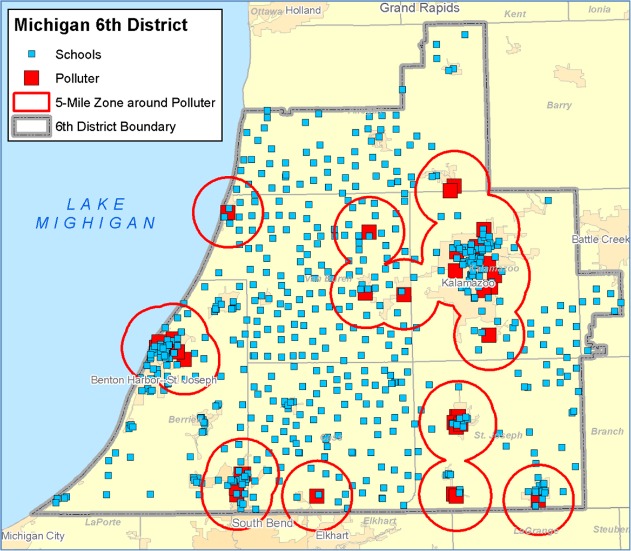 For some representatives, the health of schoolkids just doesn’t seem to be the priority.Cross-posted from the Natural Resources Defense Council.
For some representatives, the health of schoolkids just doesn’t seem to be the priority.Cross-posted from the Natural Resources Defense Council.
Some questions should be easy to answer. But, with Congress, some things are never easy. Fresh off the House vote to let polluters dump unlimited amounts of carbon pollution into the air, a House subcommittee under the jurisdiction of chair Fred Upton (R-Mich.) will start to consider letting polluters dump unsafe amounts of toxic pollution into the air.
You see, for years a lot of polluters have avoided having to reduce their emissions of toxic pollution — this is the hard-core stuff that causes cancers, birth defects, developmental disorders, etc. Power plants, cement kilns [PDF], and other industrial plants [PDF] have either never had to meet clean air safeguards for toxic pollution, or have not had to meet effective ones. By updating clean air safeguards on toxic pollution, the EPA will save over 25,000 lives per year.
The EPA’s stronger safeguards to protect against toxic air pollution will have profound benefits for health at the local level. As USA Today documented in a superb special report focusing on toxic emissions near schools, the more toxic pollution in the air, the more health problems you’ll find near the plant dumping the stuff out:
In some school districts, emissions from the smokestacks of refineries or chemical plants threatened students of every age, preschool through prom. Outside those schools, reports from polluters themselves often indicated a dozen different chemicals in the air. All are considered toxic by the government, though few have been tested for their specific effects on children.
Scientists have long known that kids are particularly susceptible to the dangers. They breathe more air in proportion to their weight than adults do, and their bodies are still developing. Based on the time they spend at school, their exposures could last for years but the impact might not become clear for decades.
So health and other groups applauded [PDF] when the Environmental Protection Agency started updating clean air safeguards to protect our health from these deadly toxins.
Unfortunately, for some members of Congress, the health of schoolkids — and the rest of us — just doesn’t seem to be the priority. Which brings us back to the hearing this Friday, which will be the first formal hearing to discussion stopping or delaying the EPA from reducing toxic pollution.
So I thought it would be illuminating to take a look at how proposals to stop or delay the EPA might affect things back home … in the districts of members who will be taking this issue up.
Let’s start with Fred Upton, from Michigan’s 6th District. NRDC’s analysis of Toxics Release Inventory data shows that Upton’s district is home to 33 plants that emit over 365,000 pounds of toxic pollution annually, and that there are 247 schools within 5 miles of these plants.
Here’s a map of Upton’s district, with toxic polluters and nearby schools clearly marked.

USA Today‘s page is really handy here, since it allows you to zoom in and see the names of the plants and the schools, plus it ranks the air quality around each school.
Now, who in their right mind would advocate for EPA to do anything other than hurry up and cut the pollution coming from these kinds of plants?




